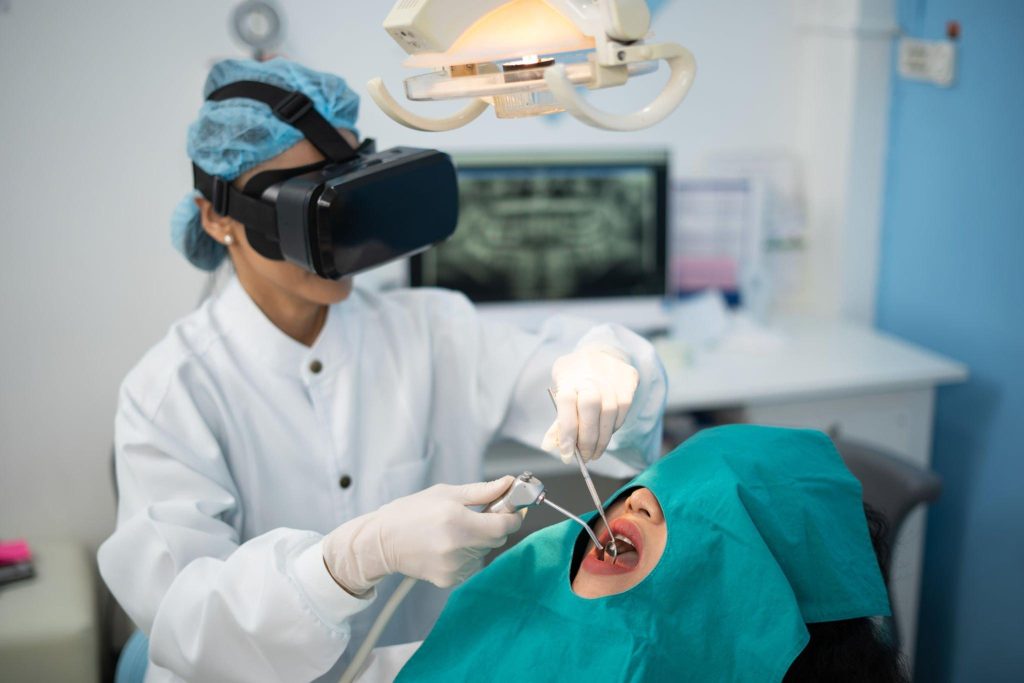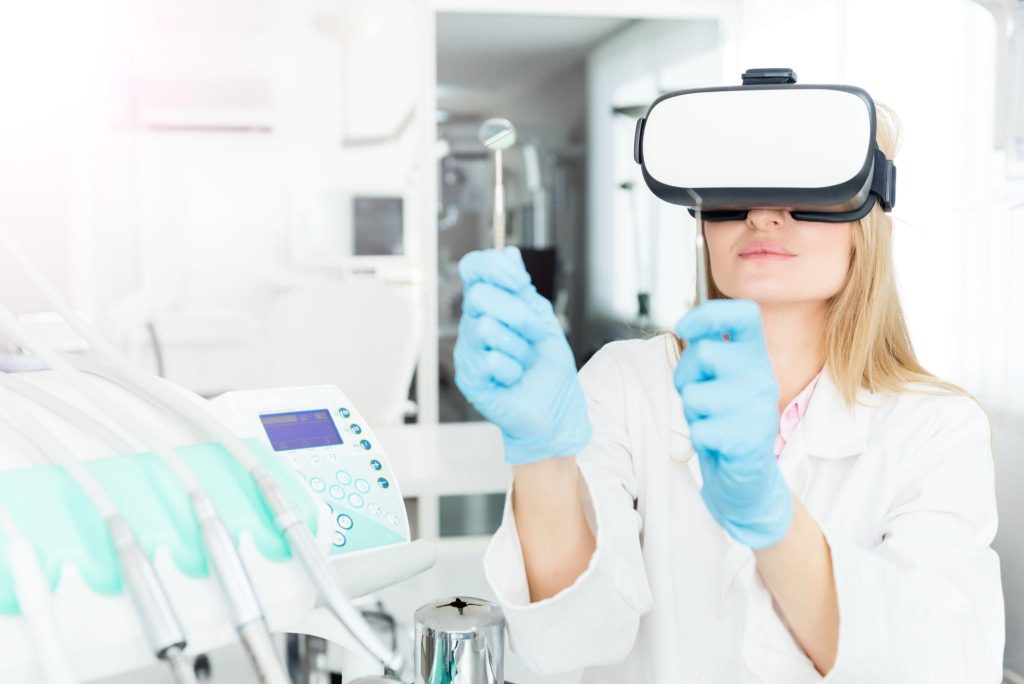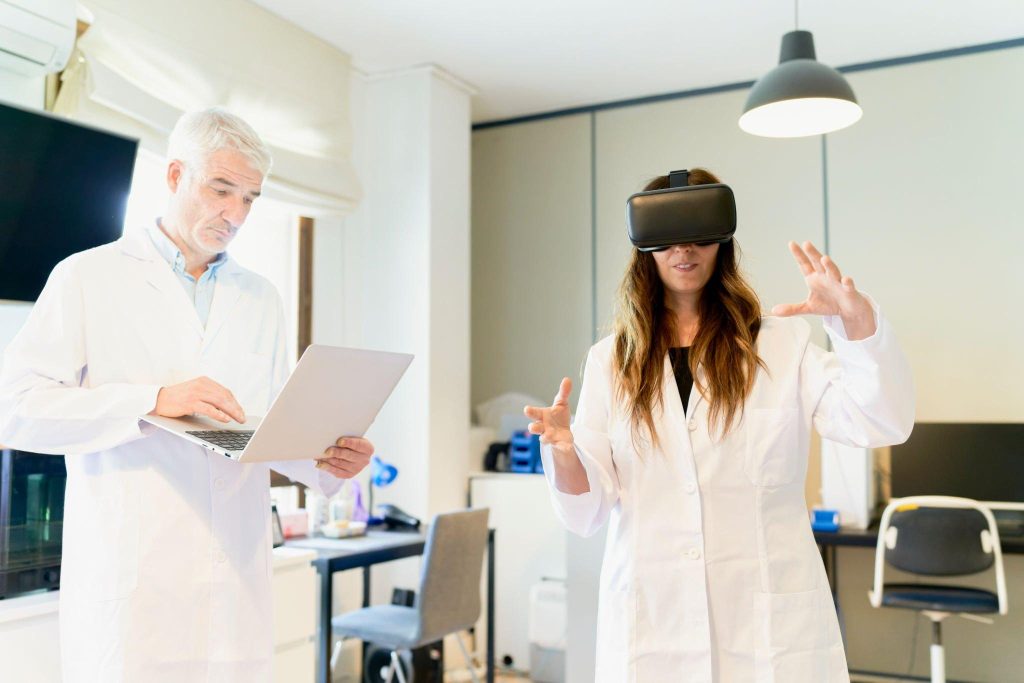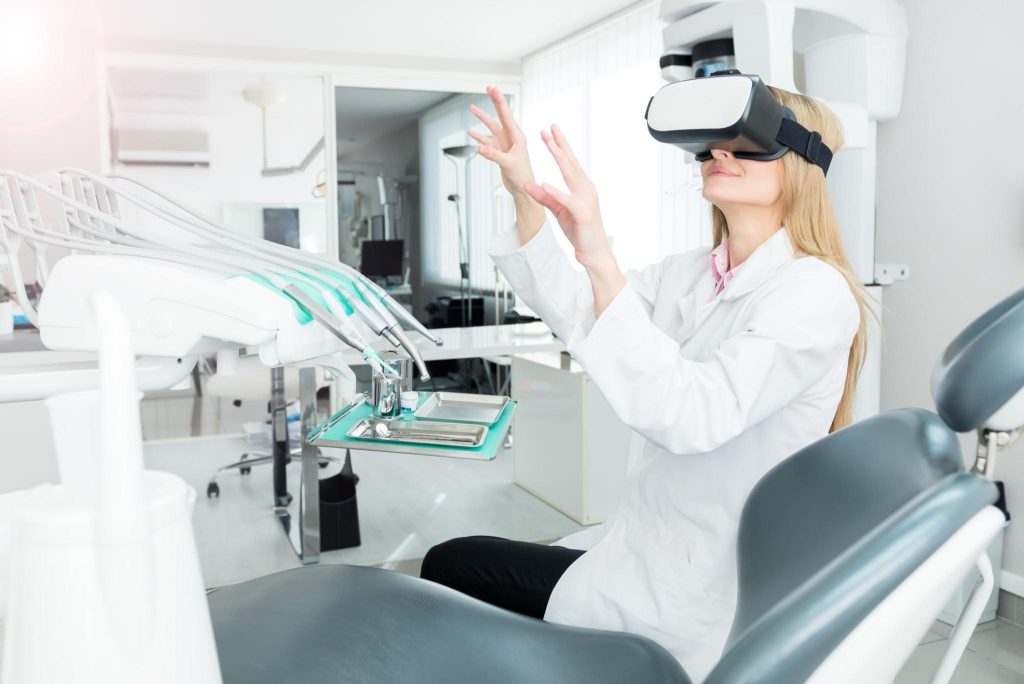The integration of augmented reality (AR) and virtual reality (VR) in dental education and training has marked a significant milestone in the evolution of dental pedagogy. As outlined by Joda et al. (2020), these technologies provide immersive, interactive learning experiences that enhance the acquisition of dental skills and knowledge.
In this post, we’ll explore the role of AR and VR in dental education, highlighting their benefits and potential for the future.

Revolutionizing Dental Education with AR and VR
A New Era of Learning and Training
AR and VR technologies have brought about a paradigm shift in how dental skills are taught and learned, offering realistic, hands-on experiences without the limitations of traditional methods.
Advancements in Dental Training:
- Realistic Simulations: Replicating real-life dental scenarios for practical learning.
- Interactive Learning Environments: Engaging students in a more interactive and immersive educational experience.

Benefits of AR and VR in Dental Training
Enhancing Skill Acquisition and Retention
The implementation of AR and VR in dental training has numerous benefits that contribute to the effective learning and retention of skills.
Key Benefits Include:
- Improved Understanding: Reinforcement of theoretical knowledge through practical application.
- Skill Development: Faster and more effective acquisition of dental skills.
- Self-Evaluation and Feedback: Opportunities for self-assessment and instant feedback on performance.
AR and VR Applications in Dental Education
Diverse Uses in Teaching and Learning
AR and VR are utilized in various aspects of dental education, from basic training to advanced surgical procedures.
Applications in Dental Training:
- Procedural Training: Simulating complex dental procedures for hands-on practice.
- Anatomy and Diagnosis: Enhancing the understanding of dental anatomy and pathologies.
- Surgical Simulation: Preparing students for real-life surgeries through virtual environments.

The Role of AR and VR in Clinical Practice Training
Preparing Students for Real-World Scenarios
AR and VR technologies prepare dental students for clinical practice by simulating real patient interactions and procedures.
Clinical Training Enhancements:
- Patient Interaction Skills: Simulating patient consultations and interactions.
- Surgical Precision: Practicing surgical procedures in a controlled virtual environment.
- Risk Management: Learning to manage potential complications in a safe setting.
Overcoming Limitations in Traditional Dental Education
Addressing the Gaps with Technology
AR and VR address several limitations inherent in traditional dental training methods, offering a more comprehensive and effective learning approach.
Addressing Educational Gaps:
- Reducing Dependency on Physical Models: Minimizing the need for expensive and limited dental models.
- Standardizing Training: Ensuring consistent training experiences for all students.
- Safety and Ethical Considerations: Practicing procedures without the risk of harming real patients.

The Future of AR and VR in Dental Training
Potential Developments and Innovations
The future of AR and VR in dental education looks promising, with ongoing advancements and potential new applications.
Future Trends:
- Integration with Artificial Intelligence: Enhancing training modules with AI for personalized learning experiences.
- Expansion into Continuing Education: Utilizing AR and VR for ongoing professional development and specialization.
- Global Accessibility: Making high-quality dental training accessible to students worldwide.
Conclusion
AR and VR technologies represent a significant advancement in dental education and training. They offer realistic, interactive platforms for students to hone their skills, understand complex concepts, and prepare for clinical practice in a safe and controlled environment.
As these technologies continue to evolve, they are set to further revolutionize dental education, making it more efficient, effective, and globally accessible.
